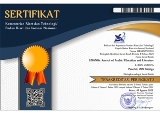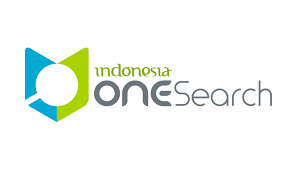Asykāl at-Taḥawwul al-lughawi fī al-Muḥādaṡah al-‘Arabiyyah ladā Thullāb Ma’had Yanbū’ al-Qur`ān
Abstract
Keywords
Full Text:
PDFReferences
Agustinuraida, Ida. Alih Kode dan Campur Kode dalam Tuturan Bahasa Indonesia oleh Mahasiswa Prodi Pendidikan Bahasa Indonesia Universitas Galuh Ciamis. Jurnal Diksatrasia, Vol. 1 No. 2, 2017.
Ainin, Moh. Metodologi Penelitian Bahasa Arab. Malang: Universitas Negeri Malang. 2005.
Ansar, Fithrah Auliya. Code Switching and Code Mixing in Teaching-Learning Process. ENGEDU, Vol. 10 (1), 2017.
Begum, Most Tasnim, & Md. Mahmudul Haque. Code Mixing in the KSA: A Case Study of Expatriate Bangladeshi ang Indian ESL Teachers. Arab World English Journal, Vol. 4 No. 4, 2013.
Chaer, Abdul. Psikolinguistik Kajian Teoretik. Jakarta: PT. Rineka Cipta. 2003.
Chaer, Abdul. Sosiolinguistik Perkenalan Awal. Jakarta: PT. Rineka Cipta. 2014.
Fachrurrozi, Aziz dan Erta Mahyudin. Pembelajaran Bahasa Asing Tradisional dan Kontemporer. Jakarta: Raja Grafindo Persada. 2016.
Fanani, A., & Ma'u, J. (2018). Code switching and code mixing in English learning process.
LingTera, 5(1), 68-77. doi:http://dx.doi.org/10.21831/lt.v5i1.14438
Gunawan, Yudhie Indra, & Suparti. An Analysis of Code Mixing in a Bilingual Language Acquisition. Globish, Vol. 7, No. 1, July 2018.
Halidun, Wa Ode Siti Hardianti. Language Model and Grammatical Constraints on Code Switching in The Case of Bahasa Indonesia-Chinese. Journal of Literature, Language and Linguistics, Vol. 66, 2020. DOI: 10.7176/JLLL/66-05
Margono, S. Metodologi Penelitian Pendidikan. Jakarta: Rineka Cipta, 2003.
Muslim, Muhammad Ariadi, dkk. Kilas Balik Sejarah Pendidikan Bahasa Arab. Yogyakarta: Sunrise. 2015.
Muysken, Pieter. Bilingual Speech: A typology of code-mixing. Cambridge: Cambridge University Press. 2000.
Wardhaugh, Ronald. an Introduction to Sosiolinguistics. New York: Basil Blackwell. 1988.
Zaini, Hisyam. Bahasa Arab Khas Gontor. Yogyakarta: PT. Bentang Pustaka.
DOI: https://doi.org/10.18326/lisania.v4i2.163-175
Refbacks
- There are currently no refbacks.
Copyright (c) 2020 Niswatush Sholihah, Noor Shofiana Mayasari
View My Stats







